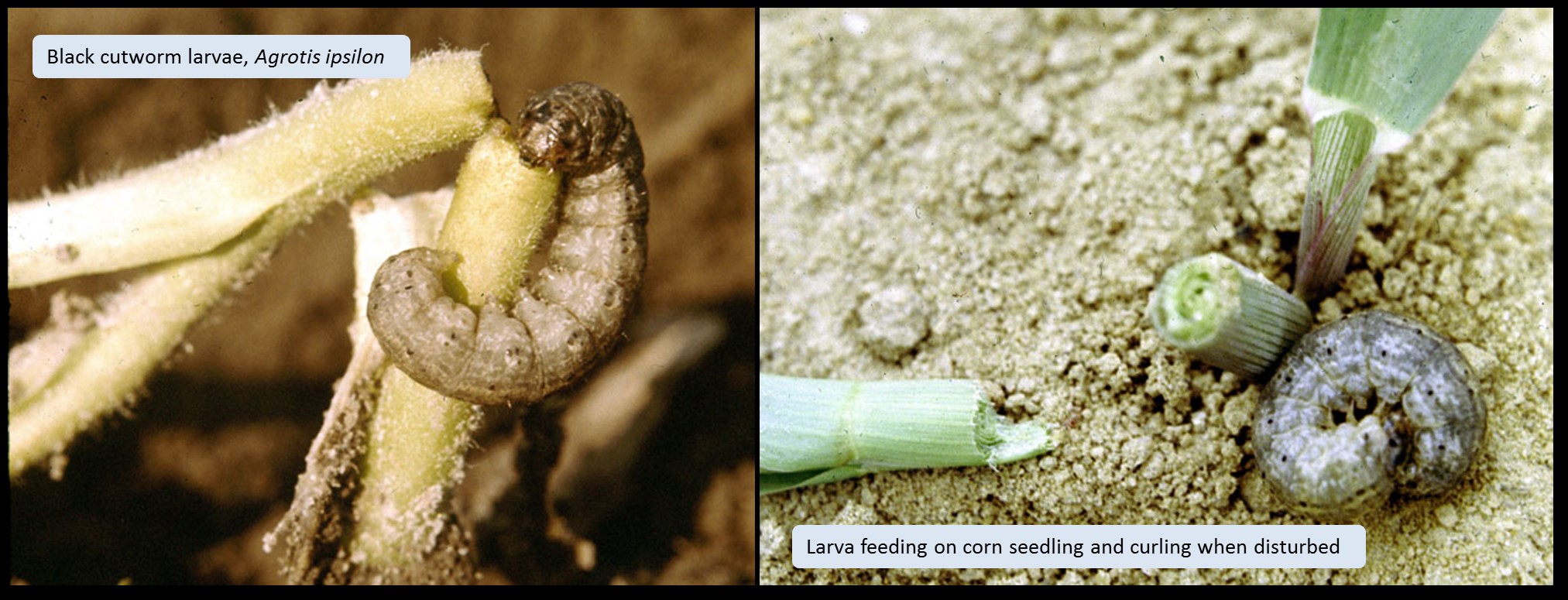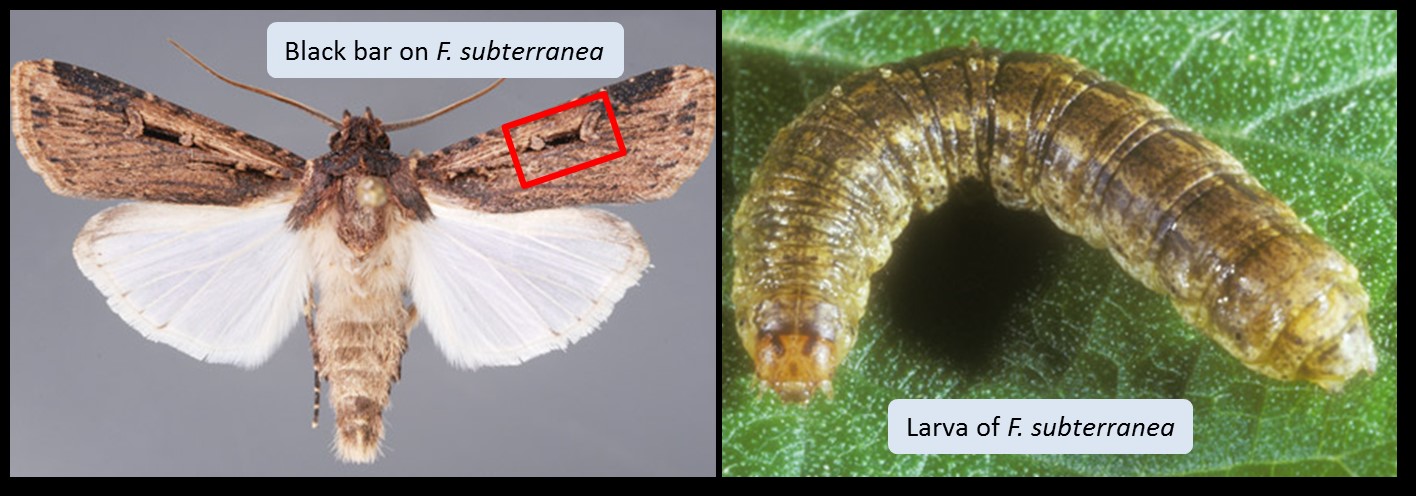What are cutworms?
The term “cutworm” describes a group moths all known for their extremely characteristic larval damage – cutting a new seedling stem down to the soil level (Figure 1). One larva can cut down multiple plants in one night, which can be especially frustrating for the home gardener. Newly transplanted seedlings and newly emerged seedlings are most at risk from this pest. Older plants fare a little better, because the cutworms only consume the foliage and usually do not kill the entire plant. However, if enough foliage is consumed, the plant will die. Some larva will bore into fruit and this is usually only seen when a fruit is touching the soil.
Figure 1: Damage from cutworms

Identification
The larvae are difficult to identify because they typically only feed at night and older larvae crawl into the soil during the day. Dig around the damaged plants to find the older larvae, which will curl up when disturbed. Young larvae will stay on the plants during the day, but may still be difficult to find. The larvae are gray-brown, often with black spots on top and weak yellow and gray lines running down the length of the body. The adult moth is somewhat non-descript being a brown moth with white hindwings. The distinguishing character of the granulate cutworm (Feltia subterranea), the most significant cutworm in the Gulf Coast, is the black bar on the forewing (Figure 2). Other species of cutworms do not have this black bar, but look very similar in overall shape and coloring.
Figure 2: Identification of the Granulate cutworm, Feltia subterranea

To read more about the control, biology, and life histoty of cutworms, please visit the featured creatures on black cutworm or the granulate cutworm.
 1
1
